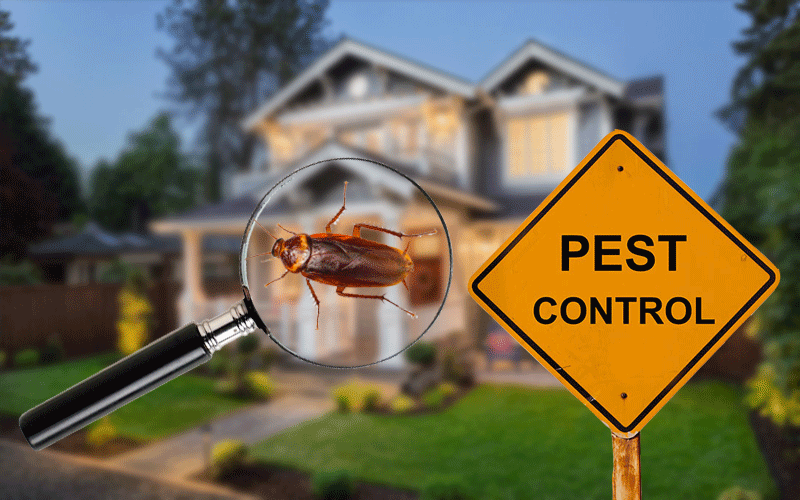A1 Charlotte Pest Control Companies - Your Regional Pest Experts
A1 Charlotte Pest Control Companies - Your Regional Pest Experts
Blog Article
Bed Insect Therapy Break Down: Contrasting Chemical Vs. Non-Chemical Solutions
In the realm of bug control, particularly when taking care of the consistent concern of bed bugs, the option in between chemical and non-chemical treatment options can be an essential one. Both strategies offer distinctive benefits and drawbacks, influencing elements such as effectiveness, safety and security considerations, and overall cost. By taking a look at the nuanced details of each method, a clearer understanding of which path to pursue in resolving a bed bug infestation can be achieved.
Effectiveness of Chemical Therapies
Chemical treatments for bed pest infestations have actually been extensively recognized for their quick and potent efficacy in getting rid of these bugs. When thinking about the efficiency of chemical treatments, it is important to comprehend that they can offer a complete and quick option to a bed insect problem.
Furthermore, chemical treatments have the advantage of supplying recurring results, indicating that they can proceed to get rid of bed insects even after the initial application. This recurring action is particularly valuable in combating any type of possible re-infestations. Additionally, the rapid activity of chemical therapies can bring relief to individuals encountering extreme bed bug infestations, enabling them to reclaim control of their living spaces promptly.
Safety Problems With Chemical Solutions
One crucial element that calls for cautious consideration when utilizing chemical solutions for bed bug therapy is making sure the security of occupants and the setting. Exposure to certain chemicals made use of in bed bug treatments can lead to respiratory concerns, skin inflammation, or various other unfavorable reactions, specifically in individuals with pre-existing problems or sensitivities.
Additionally, the environmental impact of chemical remedies is one more significant consideration. Some pesticides used in bed pest treatments might be hazardous to beneficial insects, wild animals, and communities if they seep right into the soil or water systems. It is important to utilize chemical treatments judiciously, complying with security standards, and considering less hazardous choices to reduce these threats and guarantee the effective and secure administration of bed pest problems.
Benefits of Non-Chemical Approaches
Thinking about the prospective safety and security concerns and environmental effect connected with chemical services for bed insect treatment, checking out non-chemical techniques presents an encouraging choice with a number of unique advantages. Non-chemical therapies are environmentally pleasant, as they do not add to air or water contamination, making them a sustainable option for bug control.
In addition, non-chemical solutions can be reliable in targeting bed bugs, consisting of hard-to-reach locations where chemical therapies might not pass through. Techniques such as heat treatment, vacuuming, steam cleaning, and bed mattress encasements provide thorough removal without using damaging chemicals. Furthermore, non-chemical strategies can be much less turbulent, needing minimal preparation and enabling for quicker reentry into dealt with areas. Overall, going with non-chemical bed pest therapy techniques not just prioritizes safety and security and environmental management but additionally guarantees reliable and thorough insect control.
Limitations of Non-Chemical Treatments

Additionally, non-chemical therapies commonly require multiple applications to accomplish successful removal. This can be lengthy and might not always ensure complete elimination of all bed bugs and their eggs, especially in hard-to-reach or surprise locations.
Furthermore, the success of non-chemical therapies greatly navigate here depends on appropriate implementation and thoroughness, which can be testing for individuals without expert know-how. Inadequate application of non-chemical approaches may result in incomplete removal, causing relentless infestations and the demand for added therapies.
Consequently, while non-chemical therapies have their advantages, it is vital to recognize these constraints and consider them when establishing the most reliable strategy for managing bed bug problems.
Price Contrast: Chemical Vs. Non-Chemical Options
Offered the limitations related to non-chemical treatments, a necessary aspect to review in the context of bed insect monitoring is the price contrast in between chemical and non-chemical options. Chemical therapies commonly involve the application of pesticides by specialists, which can range from $250 to $900 per room, depending upon the seriousness of the problem and the size of the area to be treated. On the other hand, non-chemical treatments like warm treatment or vapor can be extra pricey, with expenses ranging from $1,000 to $6,000 for an entire home. While the preliminary price of chemical therapies may appear reduced, numerous treatments might be required to totally eradicate the problem, possibly boosting the total price. On the other hand, non-chemical alternatives might supply a much more eco-friendly and lasting remedy, although they can be cost-prohibitive for some people. Inevitably, when thinking about the price of bed insect therapy options, it is essential to evaluate the ahead of time costs versus the performance and lasting sustainability of the selected approach.
Conclusion

Thinking about the possible security concerns and environmental influence associated with chemical remedies for bed insect treatment, discovering non-chemical techniques provides a promising choice with several unique advantages.Provided the constraints connected with non-chemical therapies, a necessary facet to evaluate in the context of bed bug monitoring is the cost contrast in between chemical and non-chemical alternatives. In comparison, non-chemical therapies like warm therapy or heavy steam can be extra costly, with prices ranging Web Site from $1,000 to $6,000 for an entire home. While the first expense of chemical treatments may appear lower, multiple treatments may be called for to fully eradicate the invasion, potentially raising the total cost.In final thought, when contrasting chemical and non-chemical bed bug therapy alternatives, it is essential to think about effectiveness, safety and security, benefits, constraints, and cost.
Report this page